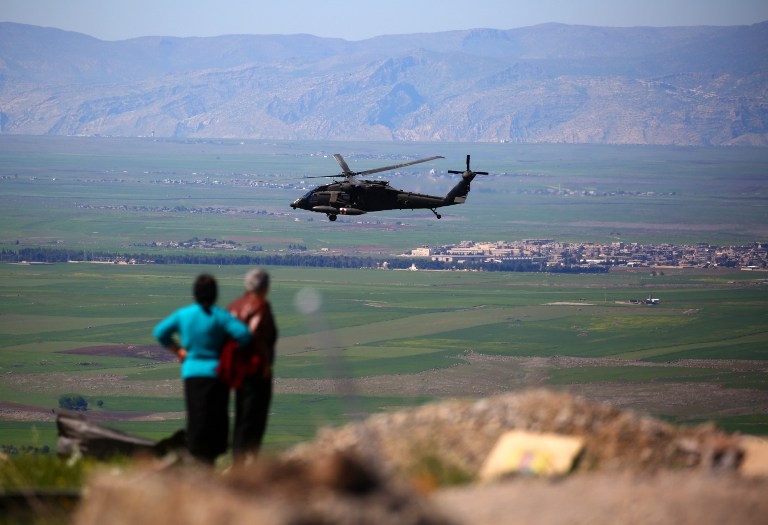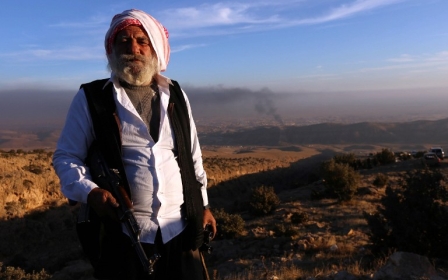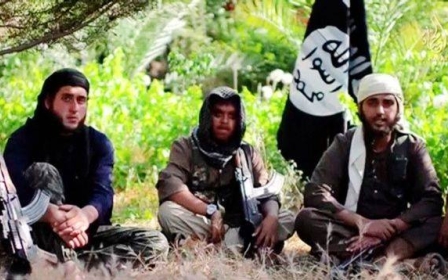Turkey's Syria gamble: How far will Ankara go?

A new chapter has opened in Turkey’s military operations in Syria and Iraq.
It's one whose long-term outcome is very difficult to predict, but which poses a formidable challenge to the Kurdish enclaves of northern Syria and perhaps also to the US and Russia. It is likely to create a diversion from work of the US-led coalition just as it is poised to take Raqqa, the Islamic State (IS) group's de facto capital.
Around 2am local time on Tuesday, Turkish air force fighters struck at the Kurdish outposts of Sinjar in northern Iraq and near Mount Qarachok in Syria, killing around 70 militants in Syria and five Peshmerga fighters of the Barzani administration in Erbil, which is an ally of Turkey. The following night there were more air strikes.
These developments upset the picture of the Syrian conflict that has prevailed for the last few months since the capture of Al Bab, a small town north of Aleppo, when Turkey found itself hemmed in. This was because the Russians and Americans combined to block Turkish forces from moving eastward against either the Syrian Kurds or IS, which seems to have been a fairly brutal message for the Turks.
The American and Russian chiefs of general staff jointly met their Turkish counterpart in Antalya to persuade him that Turkey should not advance any farther. Operation Euphrates Shield, the Turkish intervention in Syria, was declared to have concluded successfully, although there was no talk of a withdrawal of the 4,000 Turkish troops in Syria.
Onwards and upwards
The decision for a new style of intervention followed a deadlock over Syria in discussions between Turkey and the US when Rex Tillerson, the US secretary of state, visited Ankara on 30 March.
The Turks hoped the Trump administration would agree to setting up "no fly zones" in northern Syria, but discovered that Washington's position remains essentially what it was under President Barack Obama.
Although their differences were publicly described as relating to IS, the real sticking point is US military unwillingness to break with its Syrian Kurdish allies in the SDF (Syrian Democratic Forces) who have been its most effective partners against IS. President Recep Tayyip Erdogan then began declaring that Turkey’s intervention in Syria was not over and there would be further operations.
This week, those "further operations" began with simultaneous strikes at the Kurds in both Iraq and Syria.
Sinjar and Qarachok
The principal initial target is Sinjar, which seems to be turning into a new nerve centre for the PKK (Kurdistan Workers' Party) forces who have occupied it since it was recaptured from IS in 2015.
Turkey’s jets have been striking relentlessly at Mount Qandil, the original PKK headquarters in northern Iraq since July 2015, and has repeatedly warned that it will never permit the PKK to hold Sinjar. US officials backed up the Turkish position by insisting, evidently fruitlessly, on a PKK withdrawal, describing it as a "foreign terrorist organisation".
Across the border in Syria, Qarachok, the other main Turkish target, is an outpost of the PYD (Democratic Union Party), the Syrian offshoot of the PKK - which however is not regarded as a terrorist organisation but a dependable ally by the US. The PYD said that the bombing of Qarachok had done serious damage and claimed 18 lives.
The important point in all this is that Turkey now believes that its planes can safely enter Syrian airspace to attack targets there.
However, the hostilities were not confined to the skies. There were also cross-border exchanges of fire on several points along Turkey’s border with Syria, with Turkey claiming that it had come under mortar bomb attack in four places, injuring some of its soldiers.
That sounds like precisely the sort of clashes which precede the escalation of a conflict. If the air strikes are followed by ground operations, as Turkish media outlets are already hinting, this will be a new stage in the conflicts both in Syria and Iraq, adversely affecting both the US and Russia.
Both Russia and the US immediately expressed their unhappiness at Tuesday’s strikes, with Russia describing them as "unacceptable" and the Americans going even further. Mark Toner, the US State Department Spokesperson, said: “These air strikes were not approved by the [anti-IS] coalition and led to the unfortunate loss of life of our partner forces."
Turkey responded by insisting that it had given sufficient warning of one hour (the same time as the US gave to the Russians before its own missile strike on a Syrian regime base on 6 April). Pro-government Turkish newspaper Daily Sabah commented "that despite the change at the top, the Americans had learned nothing and forgotten nothing".
Pressing on?
Erdogan clearly calculates that in this new intervention, he can avoid a direct conflict with either the Russians or the Americans in Syria.
Turkish diplomacy will be tested to the utmost next month when he meets with Russia’s Vladimir Putin in Sochi on 3 May and then Trump in Washington two weeks later. In both cases, it has already been announced that the situation in Syria will be the main item on the agenda.
The critical point for Turkey’s strategy is how far both the US and the Russians will allow it to go to reverse the growing independence of the Syrian Kurds. If the outside powers have some common understanding, as suggested by the Antalya meeting of the three countries’ commanders in March about how to contain Turkey’s inroads in Syria, then Ankara’s strategy will not work.
Ankara's actions will probably depend on what the outside powers perceive as Turkey’s new strategic goals in Syria. Is Turkey simply trying to stop Kurdish military power growing, or would it like to see at least some Kurdish-held territory regained for its allies in the Sunni opposition? Given the Kurds’ record as effective fighters, is the latter even a possible option for an invading army to achieve?
But Ankara will recall that at Kobani, where the Syrian Kurds eventually won in a desperate siege by IS in 2014, they did so largely because of support from the air by the US.
Having finally gained a chance to use its air force over Syria, Ankara is not going to give it up easily and will probably try and press its advantage further.
- David Barchard has worked in Turkey as a journalist, consultant, and university teacher. He writes regularly on Turkish society, politics, and history, and is currently finishing a book on the Ottoman Empire in the 19th century.
The views expressed in this article belong to the author and do not necessarily reflect the editorial policy of Middle East Eye.
Photo: A medical helicopter, from the US-led coalition, flies over the site of Turkish air strikes near northeastern Syrian Kurdish town of Derik, known as al-Malikiyah in Arabic, on 25 April 2017 (AFP)
This article is available in French on Middle East Eye French edition.
New MEE newsletter: Jerusalem Dispatch
Sign up to get the latest insights and analysis on Israel-Palestine, alongside Turkey Unpacked and other MEE newsletters
Middle East Eye delivers independent and unrivalled coverage and analysis of the Middle East, North Africa and beyond. To learn more about republishing this content and the associated fees, please fill out this form. More about MEE can be found here.





